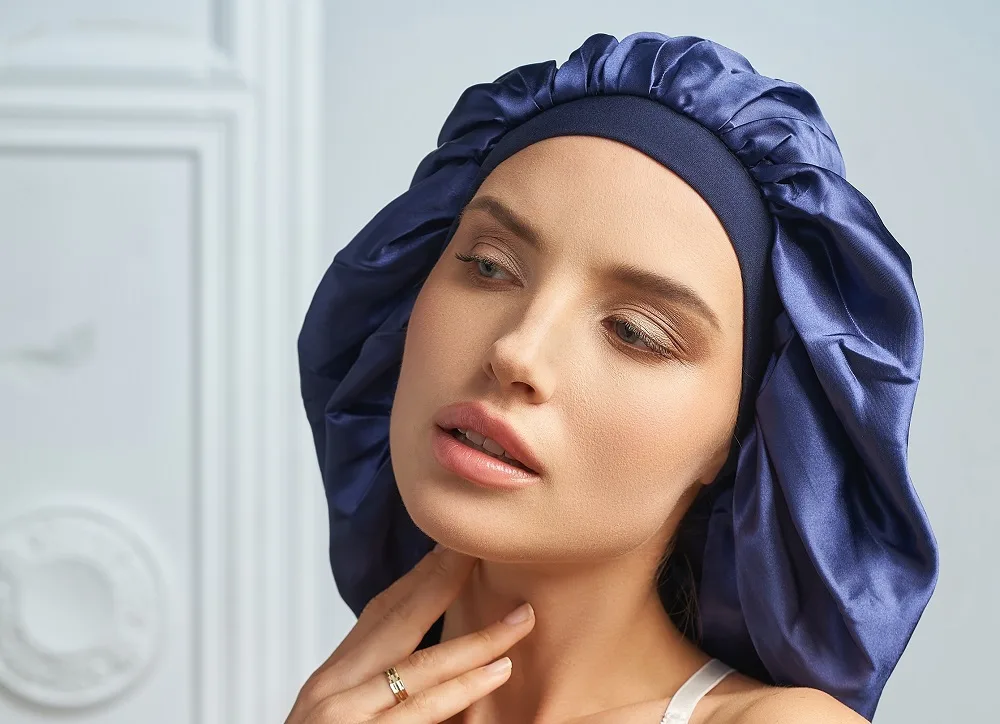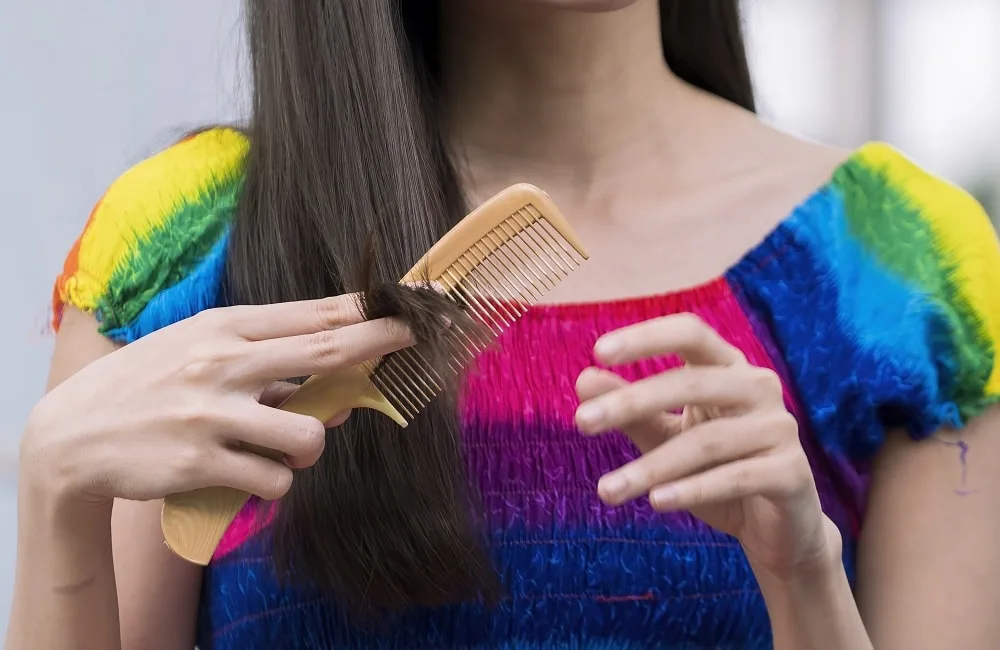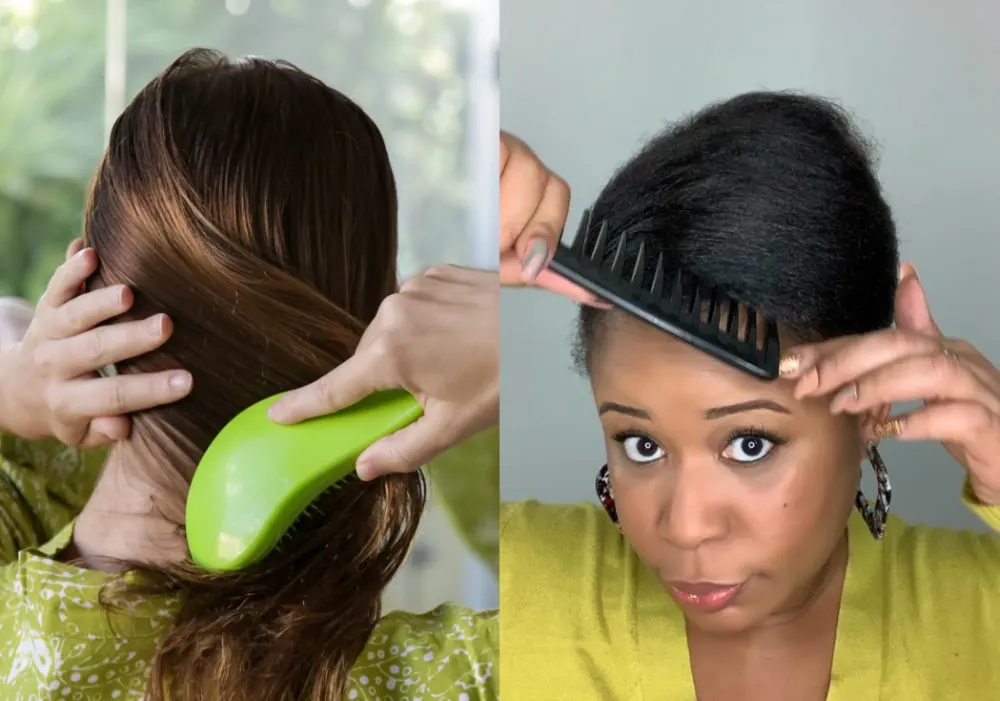Waking up is already a hassle without having to deal with messy hair. As beneficial as sleep is, it can result in frizzy, knotted, or lifeless hair if you don’t wrap your hair. So regardless of your hairstyle, wrapping your hair at night for sleeping offers a range of perks.
Unfortunately, most women struggle to find the ideal way to wrap their hair, considering the many options available. We have you covered! If you seek insightful tips on how to wrap hair before bed, read on for a step-to-step guide and go-to hair-wrapping methods.
Why Do People Wrap Their Hair?

Hair wraps have been around for centuries, making up a significant part of cultures globally. The wraps were originally worn as headgear to complement a woman’s look, especially among African women.
In some cultures, hair wraps symbolize social status, while others have worn hair wraps as a religious garment. The evolution of hair wrap designs is evident over time, with new materials and styles launching daily.
Here are some of the reasons to wrap your hair:
- Hair wraps reduce dryness: they help retain and control natural scalp oils, which are otherwise absorbed by pillowcase fabrics, leaving your hair dry. As a result, the wraps keep your hair moisturized, making it sleek and shiny.
- It’s easier to maintain a hairstyle: nighttime tossing and turning while asleep results in ruining your hairstyle. Hair wrapping will keep your hair intact, maintaining your hairstyle while making your morning hair refresh routine much simpler.
- Hair wraps reduce breakage and tangles: dry hair and friction it comes with is a recipe for hair breakages and tangles. Wrapping your hair will significantly minimize breakages and tangles, keeping it hydrated and reducing friction.
Wrapping your hair is indispensable in the nightly care routine for its various benefits to the health and styling of your hair.
What Type of Hair Wrapping Should You Choose?
Investing in a hair wrap and making it part of your bedtime regimen helps you wake up with healthy and sleek strands. Fortunately, there are various hair wrap types– and you can always find the best fit for your preferences and needs.
In this section, we highlight some of the best types of hair wrapping methods you should choose.
Silk or Satin Bonnets

A silk or satin hair bonnet is recommended if you fancy having natural hair. Silk is a natural, breathable fiber that’s very soft and comfy, making it ideal for a bonnet. Conversely, satin is not a natural fiber but boasts the same features as silk head wraps.
Unlike cotton, silk and satin bonnets don’t soak up sebum and products, leaving your natural hair moisturized. Due to the silk and satin’s smooth nature, hair glides over the fabric, minimizing friction and breakages, knots, and frizz.
Silk and satin bonnets help maintain your hairstyle, given their loose fit. The bonnets don’t flatten your hairdo, unlike other head wrap types. Finally, silk or satin bonnets are relatively affordable and easy to wear.
Conversely, silk and satin bonnets may slip off, especially if you sleep restlessly. Some bonnets come with defective or poorly designed elastic bands, resulting in a loose fit. In such a case, a bobby pin or two comes in handy in ensuring your silk or satin bonnet stays on all night.
Stocking Cap

Consider getting a stocking cap if you want a snuggly-fitting hair wrap. You can use your old or unused stockings to make the cap. The stocking cap is a perfect alternative to bonnets for sleek and flat hairstyles, as it keeps your hair close, saving you from a bad hair day.
Whereas you can buy stocking caps, you can use your creativity and make one yourself. It is a straightforward procedure to excite any DIY enthusiasts. All you need is to fit the stocking on your head, tie a knot at the top, and cut off the excess material.
Keep in mind, most stockings are made of nylon materials, which can cause dryness. Should you prefer a stocking cap, it’s recommendable to layer it with a silk bonnet or scarf.
Silt or Satin Scarf
Silt or satin scarfs speak versatility, an excellent fit for all hair types and styles, from straight hair to braids and wash-and-go styles.
Typically, satin scarves are more prevalent than silk scarves for their relatively cheaper cost, although silk scarves are ultrasoft and gentler on hair. These scarves are well-fitting for curly girls.
Slap Cap

Slap caps are the newer entrants into the sleep cap market, featuring satin internal lining. This lining is essential in keeping your hair moisturized. Another primary benefit of snap caps is that they are easy to wear and don’t need knots.
That said, these caps may not fit correctly, especially if you have a smaller head. This fitting may slip off while sleeping, resulting in messy hair when you wake. Also, slap caps are relatively more costly than other hair-wrapping options.
How To Wrap Hair at Night in 4 Easy Steps
There are various hair-wrapping techniques to protect your hair overnight. However, if you want a quick and easy way to wrap your hair at night, follow the steps below.
1. Detangle Your Hair

Use a wide-tooth comb to remove any knots in your hair, running it gently in a consistent direction throughout your hair. A wide-tooth comb is well-recommended for users with long hair, loose hair, or curly hair.
If your hair feels dry, consider locking in extra moisture by applying natural moisturizing oils or a leave-in conditioner.
2. Part Your Hair
Using the tip of your comb, part your hair horizontally along your head’s apex. Brush the hair in the front as you section it down over your forehead. Then, smooth the hair at the back down over the very back part of your head. Finally, comb your sides straight and neatly over your ears.
3. It’s Time to Wrap Your Hair

Starting from either side of your hair partitions, use a paddle brush to gently smooth your hair down one side, going around your head. Brushing your hair helps distribute the hair moisturizer throughout your hair in addition to smoothing it.
Continue brushing your hair in the same direction around your head until you get back to the starting point. Repeat this technique on the remaining hair partition and use bobby pins to hold hair strands that fall out of place.
4. Secure with a Head Wrap

After wrapping your hair and blending in any stray strands, wrap it in a scarf to keep the style in place. Fold your scarf diagonally to make a triangle, then gently spread it over your head, with the triangle facing the front.
Cover your hair carefully over the back of your head and bring the rear ends of your scarf to your brow, wrapping it around the sides of your head. Finish it by tying a small knot in front of your head, and you’re good to go!
Now that you’ve learned how to wrap hair, it’s time to say goodbye to bad hair days. Don’t worry if you have trouble wrapping your hair neatly. It takes time to master and adapt to your new nighttime hair care routine.
